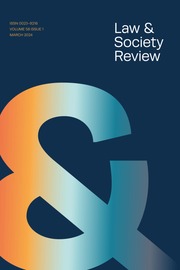Article contents
American Policing and the Danger Imperative
Published online by Cambridge University Press: 01 January 2024
Abstract
In spite of long-term declines in the violent victimization of U.S. police officers, the danger of police work continues to structure police socialization, culture, and behavior. Existing research, though attentive to police behavior and deviance that negatively affects the public, analytically ignores how the danger of policing engenders officer behavior that harms police themselves. Drawing on ethnographic observations and interviews in three U.S. police departments, this article describes how police are informally and formally socialized into the danger imperative—a cultural frame that emphasizes violence and the need for officer safety—and its effect on officer behavior. As a result of perception mediated through the danger imperative, officers engage in policy-compliant and policy-deviant behaviors to protect themselves from violence. Unfortunately, policy-deviant behaviors such as unauthorized highspeed driving and not wearing a seatbelt, though justified in the name of safety, lead to catastrophic car accidents that injure and kill both police and members of the public. This article concludes with discussion of how seemingly mundane policy deviant behaviors are a reflection of assumptions within police culture that undergird police practices that damage public wellbeing and perpetuate broader inequalities in U.S. policing.
- Type
- Articles
- Information
- Copyright
- © 2021 Law and Society Association.
Footnotes
This project was supported by the Justice Collaboratory at the Yale Law School and the Macarthur Foundation (15-108050-000-USP). The author would also like to thank Andrew Papachristos, Tracey Meares, Frederick Wherry, Joshua Page, Jooyoung Lee, Nicholas Occhiuto, and Tony Cheng for their generous insights and comments, as well as participants at workshops in the Yale Department of Sociology and the Deconstructing Ferguson Working Group.
References
A correction has been issued for this article:
- 101
- Cited by
Linked content
Please note a has been issued for this article.


